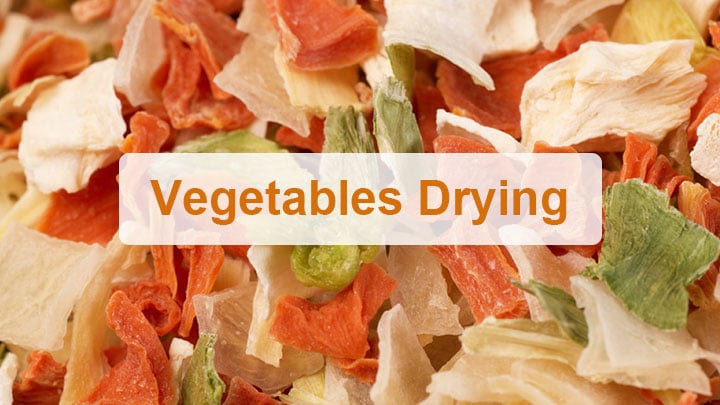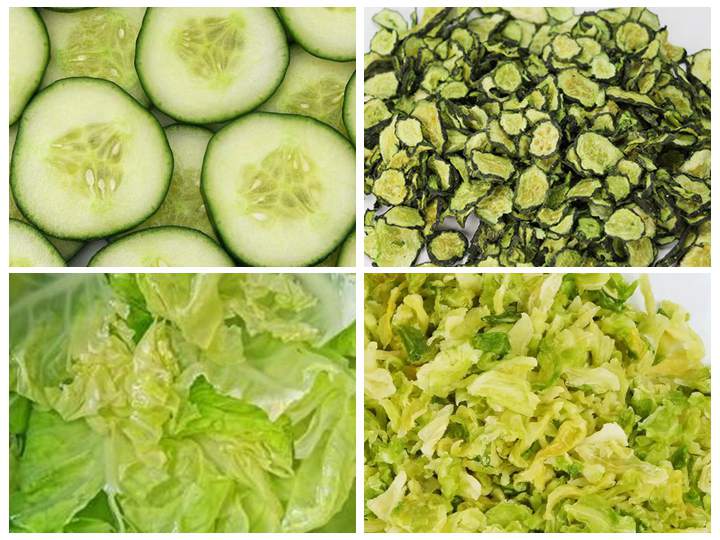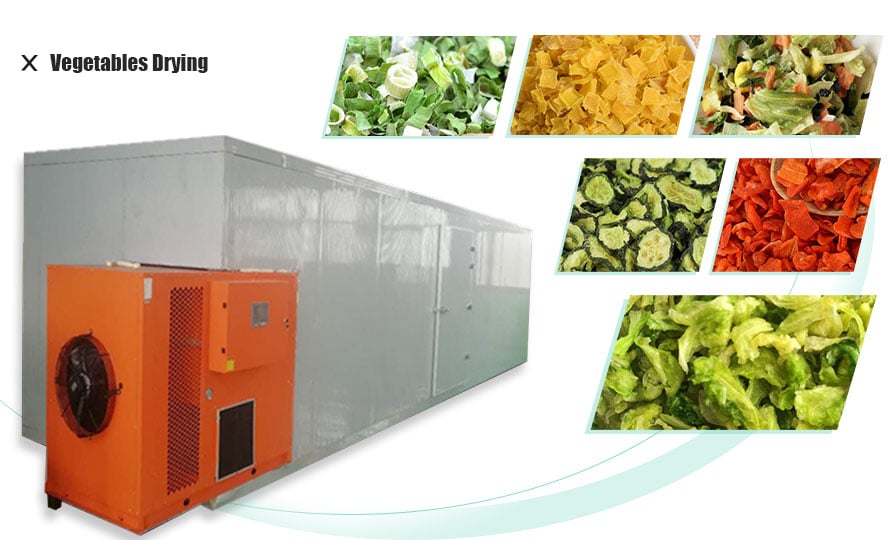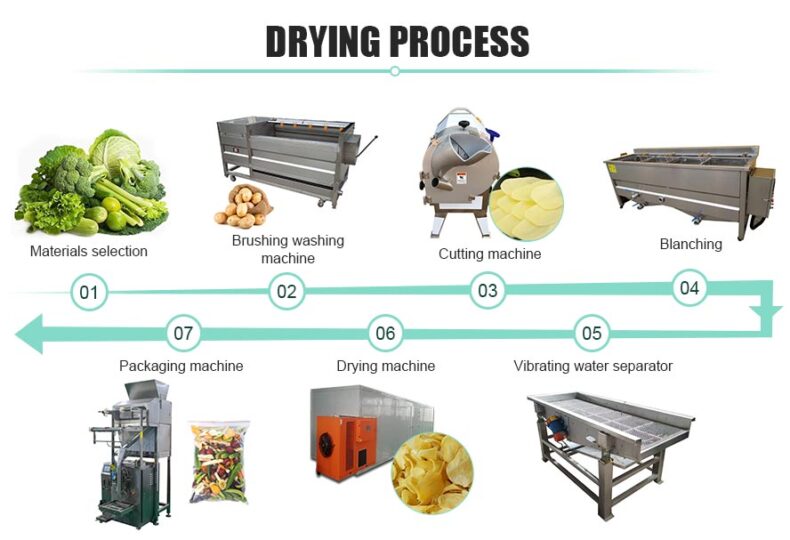
Dehydrated vegetables are made by drying fresh vegetables to remove most of the moisture content. The dehydrated vegetables can basically maintain the original color and nutrients. Compared with fresh vegetables, dehydrated vegetables have the advantages of small size, lightweight, and convenient transportation. Moreover, the dehydrated vegetables can be restored by immersing them in clean water when eating, and the original color, nutrition, and flavor of the vegetables can be retained. In the vegetable peak season, surplus vegetables can be processed into dehydrated vegetables, which are easy to store and transport.
What is the nutritional value of dried vegetables?

Vegetables are one of the essential foods in people’s daily diet. They can provide nutrients such as a variety of vitamins and minerals necessary for the human body. So do the dehydrated vegetables still have nutritional value? The answer is yes. In order to supplement nutrients in space, the vegetables that the astronauts eat are actually dehydrated vegetables. During the drying process of vegetables, only a small part of the water-soluble nutrients are lost. When most of the water in vegetables is evaporated, the nutrients will be relatively greatly concentrated. When we eat dehydrated vegetables, the nutrients we absorb may be more than fresh vegetables. And some vegetables like seaweed will be even more delicious after being dried. With the continuous development of technology, dehydrated vegetables have been able to retain most of the original nutrients of vegetables.
Why choose our vegetable drying equipment?
Vegetables and fruits are rich in water and need to be kept dry at low temperatures during the drying process. The high temperature will destroy their nutritional value and also affect the color and shape of fruits and vegetables after drying. Dehydrated vegetables on the market are mainly divided into AD vegetables and FD vegetables. Among them, AD vegetables refer to vegetables that are dried by hot air, microwave, puffing, and other methods. The water is mainly discharged in the form of evaporation. The FD vegetables are mainly dried by vacuum freeze-drying, and the water is discharged in the form of direct sublimation. FD vegetables taste better and have more nutrition, but the yield is low and the equipment is very expensive. At present, most of the dehydrated vegetables on the market are dried by hot air.

The traditional methods of making dehydrated vegetables mostly use air-drying, sun-drying, and other methods. Most of these methods have many drawbacks, such as low thermal efficiency, low automation, and susceptibility to environmental impacts. Our air energy heat pump vegetable dryer uses only a small amount of electricity to absorb a lot of heat from the surrounding environment and transfer it to the object to be heated. It has small energy consumption and a high energy conversion rate.
The process of vegetable drying
- Selection of raw materials: Choose vegetable varieties with rich meat quality. Before dehydration, you should strictly select the best and remove the inferior, and remove the pests, rot, and shriveled parts. Vegetables should be at 80% maturity, and those that are overripe or underripe should also be selected. After vegetables are rinsed with clean water, then placed in a cool place to dry, but should not be exposed to the sun.
- Cutting and blanching: Cut the cleaned raw materials into slices, silks, strips, and other shapes according to product requirements. When blanching, the temperature varies with different raw materials. The water temperature is generally above 150℃ and the general blanching time is 2 to 4 minutes. Leafy vegetables are best not blanched.
- Cooling and draining: Blanched vegetables should be immediately cooled (usually rinsed with cold water) to quickly drop to room temperature. After cooling, the water could be drained by the vibrating water separator to shorten the drying time. Then spread the vegetables out and cooled for a while to prepare for drying.

- Drying: Different temperatures, time, color, and moisture content during drying should be determined according to different vegetable varieties. It is better to use an air energy heat pump dryer for drying. The heating of air energy is slowly increased, which can maximize the maintenance of the vegetables’ original tissue fibers and nutrients. Put the vegetables into the material tray, insert the material tray into the material truck, push it into the drying room, close the sealed door, and start drying production. In the air energy heat pump drying process, when vegetables are in contact with air, a large amount of heat will be absorbed from the air energy. One part is used to increase the internal temperature of the vegetables, and the other part is used for the migration and evaporation of moisture in the vegetables. The process in which the air can continuously transfer heat to the vegetables and evaporate away from the moisture of the vegetables in the process of continuous drying. This process is divided into three stages: heating stage, constant-rate drying stage, and decelerating drying stage.
- Storage stage: After the drying is finished, don’t pack it immediately. It is best to wait until the vegetables have completely cooled down and consistent with the room temperature before starting to pack. The packed dried vegetables should be placed in a dry and cool place.
Applications of the vegetables drying machine
Our vegetable drying machine is also suitable for fruits, fungi, Chinese medicinal materials, seafood, crops, and some chemical products. It also can be customized according to the user’s demands for different products.

